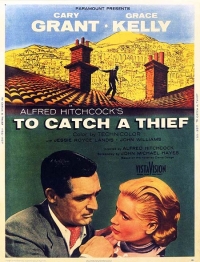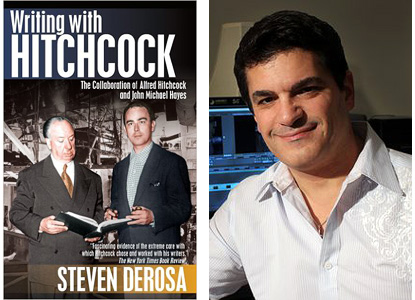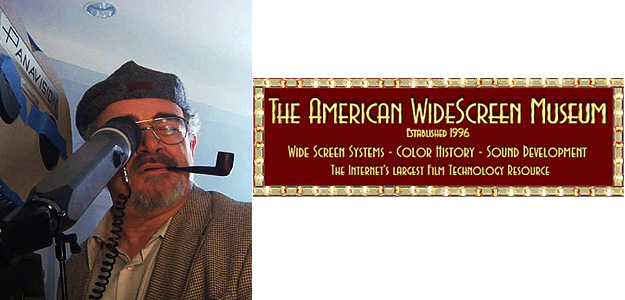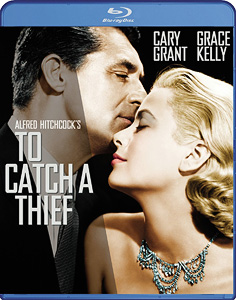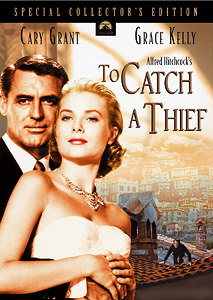THE ORIGINAL VISTAVISION LARGE APERTURE ENGAGEMENTS
A few of the hundreds of prints struck for To Catch a Thief’s initial theatrical release were in the 8-perf horizontally-projected VistaVision format. (VistaVision was primarily intended as an image capture process designed to produce higher-quality release prints in standard 35mm, but some of the initial VistaVision productions, including To Catch a Thief, had a limited number of horizontal prints struck for specially-equipped theaters.) These exceptional quality, large-aperture presentations were unique and, arguably, the best way in which to experience To Catch a Thief. The North American theaters in which these presentations played first-run were….

- 1955-08-03 … Los Angeles, CA — Paramount Hollywood (8 weeks)
- 1955-08-04 … New York, NY — Paramount (9)
- 1955-08-11 … Omaha, NE — Orpheum (2)
- 1955-08-18 … Washington, DC — Capitol (4)
- 1955-08-24 … New Orleans, LA — Saenger (2)
- 1955-08-27 … Toronto, ON — Imperial (5)
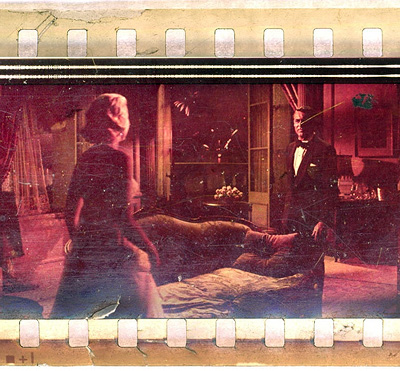
THE INTERVIEW
John Cork is the producer of special features for the DVD and/or Blu-ray releases of several Alfred Hitchcock films including The Lodger, Rebecca, Spellbound, and Notorious.
Steven DeRosa is the author of Writing with Hitchcock: The Collaboration of Alfred Hitchcock and John Michael Hayes (Faber & Faber, 2001; revised edition CineScribe Media, 2011).
Martin Hart is the curator of the American Widescreen Museum.
The interviews were conducted separately and have been edited into a “roundtable” conversation format.
---
Michael Coate (The Digital Bits): In what way is To Catch a Thief worthy of celebration on its 60th anniversary?
John Cork: To Catch a Thief is a remarkable film, a breezy, romantic thriller made at the height of Hitchcock’s technical prowess. The film would be a classic just for the kissing scenes alone. It is just a film that feels delightful on every level, despite being probably the least anxiety-inspiring Hitchcock classic. It is a film that looks like everyone enjoyed making, and that comes across in scene after scene. If you want to know what inspired audiences in the 1950s, you need not look further than this film. While it was only a modest hit domestically on its initial release, the film continued to garner box office during its many re-releases. The film was also a great technical achievement. While the process work in the film has its limits, the location and studio work shot in VistaVision is simply stunning.
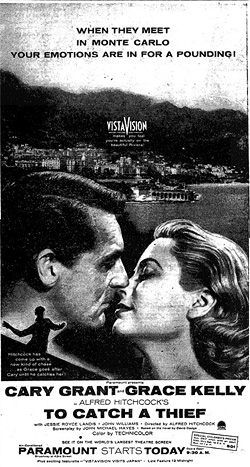 Steven DeRosa: As much as cinephiles and scholars will point to Rear Window, Vertigo and Psycho as representative works of Alfred Hitchcock, To Catch a Thief is deserving of celebration on its 60th anniversary because it, too, represents so much of what Hitchcock’s cinema was about. For starters, it’s sophisticated, entertaining, gorgeous to look at, and it stars two of Hitchcock’s favorite performers, Cary Grant and Grace Kelly…. While it might be regarded as a light entertainment, Hitchcock infused the film with many of his signature motifs. Costume and disguise are significant in the film. Edith Head, Hollywood’s preeminent designer and a frequent Hitchcock collaborator, designed no less than eleven wardrobe changes for Grace Kelly. The clothes in the film, of course, represent the characters, and it all culminates in a great masquerade ball. You will also notice in To Catch a Thief an extraordinary number of close-ups of hands. These motifs may not be immediately apparent the first time one views the film, but if you watch with these in mind, you can pick up on these directorial touches.
Steven DeRosa: As much as cinephiles and scholars will point to Rear Window, Vertigo and Psycho as representative works of Alfred Hitchcock, To Catch a Thief is deserving of celebration on its 60th anniversary because it, too, represents so much of what Hitchcock’s cinema was about. For starters, it’s sophisticated, entertaining, gorgeous to look at, and it stars two of Hitchcock’s favorite performers, Cary Grant and Grace Kelly…. While it might be regarded as a light entertainment, Hitchcock infused the film with many of his signature motifs. Costume and disguise are significant in the film. Edith Head, Hollywood’s preeminent designer and a frequent Hitchcock collaborator, designed no less than eleven wardrobe changes for Grace Kelly. The clothes in the film, of course, represent the characters, and it all culminates in a great masquerade ball. You will also notice in To Catch a Thief an extraordinary number of close-ups of hands. These motifs may not be immediately apparent the first time one views the film, but if you watch with these in mind, you can pick up on these directorial touches.
Martin Hart: The mere fact that it is a ripping good Hitchcock film is enough to merit special attention on its 60th anniversary. That kiss that Grace Kelly gave Cary Grant in the door or her hotel room alone merits a celebration.
Coate: When did you first see To Catch a Thief and what did you think of it?
Cork: I first saw To Catch a Thief at a revival theater in Georgetown on a double bill with Lifeboat. I am so glad I saw it on the big screen and not television. It was August, 1979, and I was helping my uncle move to Washington, DC. I went to the theater by myself. There was a great crowd there. I had seen some Hitchcock films, but all too few. I was intrigued by his style, but, more than anything else, I fell in love with Grace Kelly.
DeRosa: I probably saw To Catch a Thief for the first time during my freshman year of college. I’d seen about a half dozen of Hitchcock’s films during my senior year in high school and started devouring each one as soon as I could get my hands on them.
Hart: My first exposure was on black-and-white television and the entertainment value of the story and characters was very evident. It’s a good film, even on TV in black-and-white. When you add color and VistaVision, you’ve got a feast and Grace looks even better.
Coate: How is To Catch a Thief significant within the thriller genre?
Cork: To me, To Catch a Thief isn’t really a thriller. It is a love story about a woman whose sexual fantasy is to sleep with a thief, or to put it in more Freudian terms, a man who will slip into her bedroom and take her jewels. The sexuality in the film strikes just the right tone. Grace Kelly, leaning back on the sofa, the light perfectly illuminating her strapless gown and the shape of her breasts. “Look, John. Hold them.” Oh, yeah, she’s talking about that diamond neckless. This film is part of a long line of Hitchcock films that succeed because of the sexuality and sensuality they exude. Sure, there are moments of suspense in the film, but this is a movie about a different kind of night moves. This is a film about stolen kisses just as much as it is about stolen jewels.
DeRosa: In many ways, To Catch a Thief is significant in that it set the standard for the romantic caper. From The Thomas Crown Affair to The Pink Panther series, they all owe a bit of a nod to To Catch a Thief.
Hart: The thriller genre is a large one, and I would say that many are better but probably not as much fun.
Coate: Where do you think To Catch a Thief ranks among Alfred Hitchcock’s body of work?
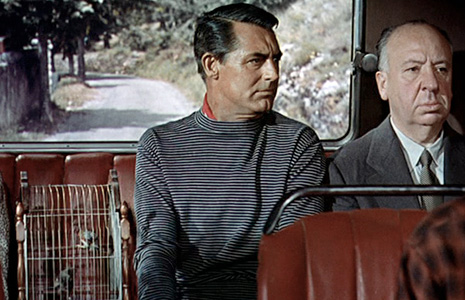
Cork: My problem is that I love so many of Hitchcock’s films. I don’t rank them. Certainly, it is not in the mind-blowing category of Rebecca or Strangers on a Train or Rear Window or Vertigo or Psycho. You can see the origins of the climax of North by Northwest on that rooftop. So I guess I would reluctantly place it squarely in the middle. That sounds too harsh…. To Catch a Thief is like an old friend who can always cheer you up on a cold and rainy day, and always make you smile. It is a guaranteed anti-depressant. Sure, it doesn’t ask you to think too much, but it does make you feel good about life. And that’s all it aspired to be.
DeRosa: The Paramount years were the pinnacle of Hitchcock’s career, beginning with the four films he made with the screenwriter John Michael Hayes—Rear Window, To Catch a Thief, The Trouble with Harry, and The Man Who Knew Too Much…. When I came to interview many of Hitchcock’s associates from the Paramount years [for Writing with Hitchcock: The Collaboration of Alfred Hitchcock and John Michael Hayes], they all seemed to remember To Catch a Thief as their fondest experience. From John Michael Hayes, the screenwriter, to Herb Coleman, the associate producer, to Doc Ericson, the unit manager, and Daniel McCauley, the assistant director, each remembered it as a very smooth production. In the evenings, Hitchcock entertained the cast and key crew, taking them for these gourmet feasts at restaurants he knew along the Riviera.
Hart: Hitchcock seemed to hit his stride around 1950 and it began to wane by 1965. To Catch a Thief is a solid entry in “The Best of Hitchcock” string which had peaked by North by Northwest and Psycho.
Coate: To Catch a Thief was one of five Hitchcock films made in VistaVision. In what way was using that process beneficial?

Cork: VistaVision remains a great format. The film is shot at twice the rate of a conventional film camera and the way that it obtains a widescreen image is by advancing film horizontally and recording the image sideways on the film. This way of shooting provided unparalleled resolution because the negative for one frame of VistaVision was twice as large as a frame shot conventionally or through a process like CinemaScope…. The possibilities of VistaVision were not lost on those who wanted the best technical image that could be recorded for their films. While the plate work and mattes in To Catch a Thief are not the best, Hitchcock understood the potential of the format, allowing for a much higher grade of technical work in Vertigo and North by Northwest…. The drawbacks of using VistaVision were that it was a lot more expensive because you burned film at twice the normal rate. Another major disadvantage for filmmakers is that VistaVision had a flexible aspect ratio. Paramount used to promote most VistaVision films as being able to be screened in anything from 1.66:1 (a mild widescreen) to 2.00:1. Paramount promoted this to theater owners as a benefit. Early CinemaScope presentations required movie theaters to get new screens (and in some cases take out seats). Paramount said theaters could show VistaVision on their old screens. For a director or director of photography, this meant that the film’s framing was at the mercy of the projectionist when it came to what might be shown on the screen. There was no official “correct” framing beyond the marked 1.66:1, 1.85:1 and 2.00:1 aspect ratios. You go see White Christmas in one theater and it is in one ratio; go to another and it is a completely different experience…. The advantage was the amazing resolution. Paramount even made some native VistaVision projectors, but very few theaters ever had them. But when it came to mattes, process shots and optical effects, VistaVision revolutionized what could be done…. Back in the early 1980s, I was driving cross country and stopped at Meteor Crater in Arizona. There were two guys working with this very odd-looking camera. Being a film student, I asked what it was. They told me they worked for Industrial Light and Magic. They were shooting background plates for a film called Starman, and the camera was a VistaVision camera. I knew of the format, but these two guys explained the horizontal movement, the amazingly high resolution and the reason that ILM used VistaVision for everything it could. I became a huge fan of the format that afternoon. So it doesn’t surprise me when I read about material for Interstellar and other films being shot on film with a VistaVision camera.
DeRosa: Hitchcock first used the VistaVision camera system on To Catch a Thief. VistaVision was Paramount’s answer to widescreen. Where Fox used Cinemascope—with anamorphic lenses that squeezed the image during filming and un-squeezed it when it was projected—VistaVision was superior in that it doubled the size of the negative by running the film through the camera horizontally and exposing the image eight perforations wide instead of four perforations high. This allowed the image to be extremely sharp, especially when doing process or rear projection. This was especially beneficial to Hitchcock who liked to bring his actors to the location—in this case the French Riviera—but then shoot the dialogue scenes in the comfort of the soundstage where he could control the environment. Robert Burks, Hitchcock’s cinematographer, won an Academy Award for his work on the film.
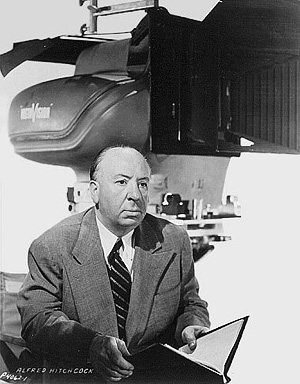 Hart: Hitchcock obviously appreciated the visual capability of VistaVision, which is why he used it even at MGM when he made North by Northwest. For the viewing audience there were no “cons” for VistaVision, but for the producers, especially as Eastman color negative and print films vastly improved by 1960, the added cost of double the negative volume, plus greater lighting requirements—including crew and power consumption—and special handling of the 8-perf film, added production costs that even Paramount began to balk at. But for To Catch a Thief, VistaVision added immeasurably to the location photography on the French Riviera, and boy did Grace Kelly look terrific.
Hart: Hitchcock obviously appreciated the visual capability of VistaVision, which is why he used it even at MGM when he made North by Northwest. For the viewing audience there were no “cons” for VistaVision, but for the producers, especially as Eastman color negative and print films vastly improved by 1960, the added cost of double the negative volume, plus greater lighting requirements—including crew and power consumption—and special handling of the 8-perf film, added production costs that even Paramount began to balk at. But for To Catch a Thief, VistaVision added immeasurably to the location photography on the French Riviera, and boy did Grace Kelly look terrific.
Coate: What is the legacy of To Catch a Thief?
Cork: Well, the legacy of the film was that Monaco gained a princess! More than that, the legacy of the film is the role it played in solidifying Hollywood’s response to television. Paramount, like all the other studios, had to find a way to deliver what television could not. With VistaVision, Paramount had an amazing piece of technology that made color films sharper than they ever had been. I love CinemaScope, the Fox process, and that certainly won out over VistaVision, but no color films ever looked as sharp as the VistaVision color films from Paramount. That look re-defined the 1950s. Hitchcock also pushed the boundaries on what kind of sex and violence Hollywood studios would tolerate. To Catch a Thief does not push the bounds of violence, but Grace Kelly’s dignified, assured sexuality was one more inch taken by a studio film in the slow march to break down these barriers…. To Catch a Thief is also a simple part of the glorious Hitchcock legacy. This was a director whose name is the first thing one sees in the film’s trailer. Hitchcock was a star like no director working today, his iconic television series starting just a few months after To Catch a Thief opened. The film is a fine example of a director working at the top of his form. Sure, the script is not intense nor does it have a very deep plot, but it does come off with the supreme confidence of one of the greatest filmmakers ever.
DeRosa: I would say To Catch a Thief is remembered most for the chemistry between Cary Grant and Grace Kelly. The icy blonde with smoldering sexual energy beneath is epitomized in this film and so much of that is highlighted in John Michael Hayes’s dialogue. The double entendres, the fireworks, the glamour—it’s all celebrated here.
Hart: The unfortunate legacy of To Catch a Thief is that its location production allowed Grace Kelly to meet Prince Rainier of Monaco and we lost one of the most gifted and beautiful actresses.
Coate: Thank you, John, Steven, and Martin, for participating and sharing your thoughts about To Catch a Thief on the occasion of its 60th anniversary.
SPECIAL THANKS:
Alain Dorange, Mark Lensenmayer, William Luca, Dan Sherlock, Vince Young.

SELECTED IMAGES:
Copyright 1955 Paramount Pictures
- Michael Coate


